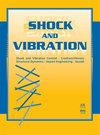A New Framework Based on Supervised Joint Distribution Adaptation for Bearing Fault Diagnosis across Diverse Working Conditions
IF 1.2
4区 工程技术
Q3 ACOUSTICS
引用次数: 0
Abstract
To address the degradation of diagnostic performance due to data distribution differences and the scarcity of labeled fault data, this study has focused on transfer learning-based cross-domain fault diagnosis, which attracts considerable attention. However, deep transfer learning-based methods often present a challenge due to their time-consuming and costly nature, particularly in tuning hyperparameters. For this issue, on the basis of classical features-based transfer learning method, this study introduces a new framework for bearing fault diagnosis based on supervised joint distribution adaptation and feature refinement. It first utilizes ensemble empirical mode decomposition to process raw signals, and statistical features extraction is implemented. Then, a new feature refinement module is designed to refine domain adaptation features from high-dimensional feature set by evaluating the fault distinguishability and working-condition invariance of feature data. Next, it proposes a supervised joint distribution adaptation method to conduct improved joint distribution alignment that preserves neighborhood relationships within a manifold subspace. Finally, an adaptive classifier is trained to predict fault labels of feature data across varying working conditions. To prove the cross-domain fault diagnosis performance and superiority of the proposed methods, two bearing datasets are applied for experiments, and the experimental results verify that the model built by the proposed framework can achieve desirable diagnosis performance under different working conditions and that it apparently outperforms comparative models.基于监督联合分布适应性的轴承故障诊断新框架适用于各种工作条件
为了解决数据分布差异和标注故障数据稀缺导致的诊断性能下降问题,本研究重点关注基于迁移学习的跨域故障诊断,这引起了广泛关注。然而,基于深度迁移学习的方法由于耗时长、成本高,尤其是在调整超参数时,往往会面临挑战。针对这一问题,本研究在基于特征的经典迁移学习方法基础上,引入了一种基于监督联合分布适应和特征细化的轴承故障诊断新框架。它首先利用集合经验模式分解来处理原始信号,并实现统计特征提取。然后,设计了一个新的特征细化模块,通过评估特征数据的故障可区分性和工作条件不变性,从高维特征集中细化领域适应特征。接着,它提出了一种有监督的联合分布适应方法,以进行改进的联合分布对齐,从而保留流形子空间内的邻域关系。最后,训练自适应分类器来预测不同工作条件下特征数据的故障标签。为了证明所提方法的跨领域故障诊断性能和优越性,应用两个轴承数据集进行了实验,实验结果验证了所提框架建立的模型在不同工况下都能达到理想的诊断性能,而且明显优于比较模型。
本文章由计算机程序翻译,如有差异,请以英文原文为准。
求助全文
约1分钟内获得全文
求助全文
来源期刊

Shock and Vibration
物理-工程:机械
CiteScore
3.40
自引率
6.20%
发文量
384
审稿时长
3 months
期刊介绍:
Shock and Vibration publishes papers on all aspects of shock and vibration, especially in relation to civil, mechanical and aerospace engineering applications, as well as transport, materials and geoscience. Papers may be theoretical or experimental, and either fundamental or highly applied.
 求助内容:
求助内容: 应助结果提醒方式:
应助结果提醒方式:


